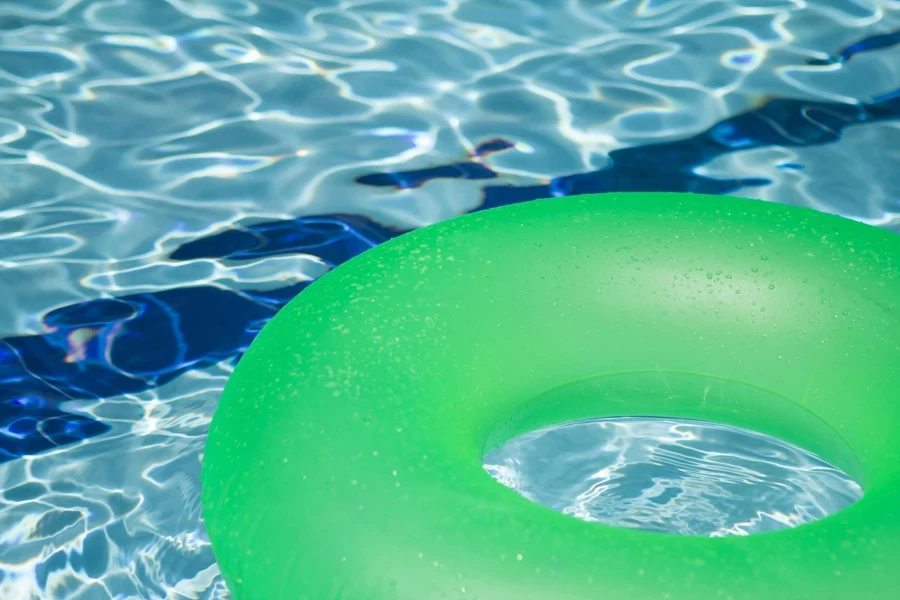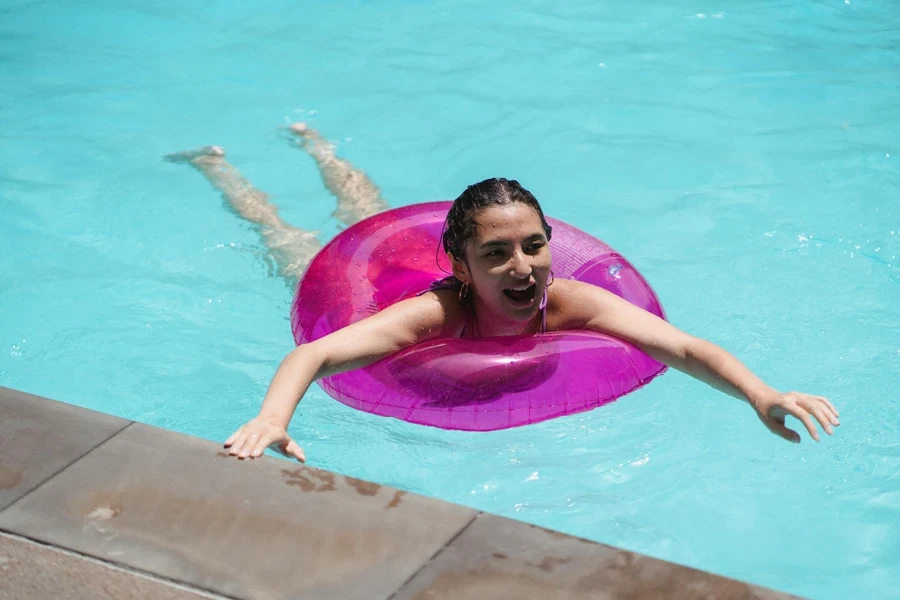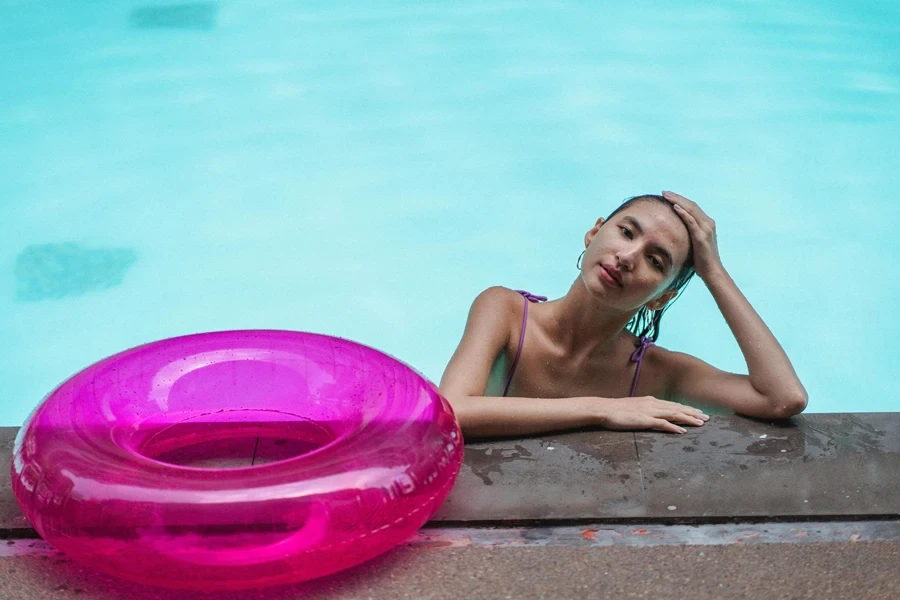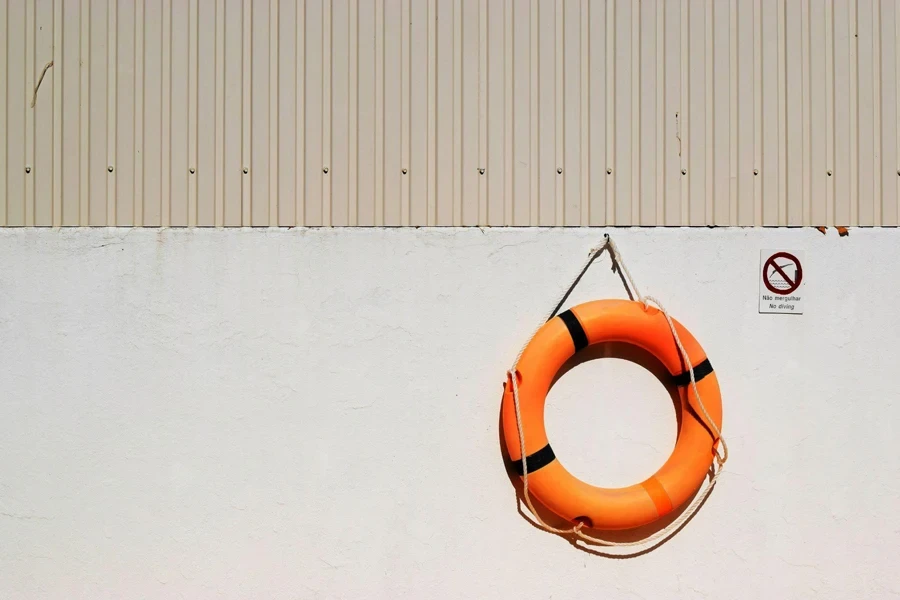Table of Contents
● Introduction
● Market Overview
● Different Types of Swimming Rings and Their Features
● Key Considerations When Selecting Swimming Rings
● Conclusion
Introduction
Swimming rings have become a must-have item in water sports for safety and fun as interest in activities rises steadily. The range of swimming floats on the market is expanding to accommodate diverse age groups and recreational pursuits. Their value extends beyond keeping people afloat as they enhance the enjoyment of swimming with materials and designs catering to a wide range of customers, from young children to grown-ups. Awareness of market trends and product features is essential for making well-informed buying choices.
Market overview

The worldwide market for swim rings is forecasted to experience growth at a rate of about 7.5% from 2024 to 2030. Valued at $1.2 billion in 2023, the market is anticipated to surpass $2 billion by 2030. This expansion is driven by the growing involvement in water-related leisure pursuits and an increasing emphasis on safety in activities in areas such as North America and Asia Pacific. The ever-increasing interest in pool floaties is fueling the market.
In swimming ring sales and distribution, a few names, like Survitec Group and International Safety Products, besides Viking Life Saving Equipment, collectively control the majority of market share in this industry. Survitec Group leads the pack with an estimated 15% thanks to its commitment to top-notch products that meet safety standards. These firms have solidified their standings by introducing ideas and maintaining strong ties with distributors. Competition in the industry is fierce as new players target areas like friendly materials and personalized designs to gain a greater market share.

Different types of swimming rings and their features
Different kinds of swim floats are available to cater to needs and preferences, including easy-to-maintain hard rings and flexible and convenient inflatable ones designed for specific age groups or activities. These variations come with features and advantages, which are important to consider when picking the right swim float that ensures safety and comfort while meeting your needs. This section will delve into the characteristics and benefits of each type to assist you in making informed choices.
Inherent swimming rings
Inherent swimming rings with built-in buoyancy are created using foam or rubber that naturally float without inflating. They are known for their durability and low maintenance requirements, which make them perfect for use. These rings are favored in places like swimming schools and public pools where safety and durability are concerns. They offer support without worrying about deflation, making them especially beneficial for kids and beginners. Industry reports suggest that the natural buoyancy aids category is projected to sustain a market presence owing to its nature and safety attributes that resonate with mindful consumers and educational establishments.
Inflatable swimming rings
Inflatable pool floats are popular for their convenience and adaptability among swimmers and those looking for water activities like pool parties or beach outings. These floats can be easily deflated for storage and transportation. Come in various sizes and fun shapes to suit different preferences and styles of fun in the sun. Nowadays, inflatable pool floats often feature air compartments to ensure safety by preventing deflation in case one compartment gets punctured unexpectedly. The choice of materials, such as PVC and other sturdy plastics, plays a big role in determining how long-lasting and secure the product is for users enjoying aquatic adventures. The inflatable sector is evolving by introducing materials and advanced valve systems that improve the speed and security of inflation and deflation processes. Market research findings suggest that inflatable swim rings hold a considerable market share globally, especially in areas like North America and Europe, where consumers prioritize convenience and a wide range of designs.

Specialized swimming rings
Specialized swimming rings come in various types to meet requirements for kids and grown-ups or specific purposes like sea rescues. Children’s swimming rings are usually smaller, with added safety features like straps or shades for sun protection. Adult rings are bigger. It may have shapes for improved support and comfort over long periods. Rescue rings are colored with strips and whistles to boost visibility and safety during emergencies. Specialized items like these usually meet safety guidelines. They are popular among customers and experts who value certain characteristics over others. Recent studies show a rising interest in swim rings in industries with high safety requirements, such as maritime sectors and organizations focused on public safety.
Key considerations when selecting swimming rings
When selecting the swimming ring for your needs, there’s more to it than choosing one that looks nice and has an eye-catching design. You need to consider safety standards, the materials used, the size, and the brand’s reputation to ensure a long-lasting product. With plenty of options, awareness of these essential factors can empower customers to make well-informed choices, prioritizing safety and quality. This segment will delve into the aspects to remember when picking out a swimming ring, ensuring that it caters to users’ requirements while offering great value.
Safety standards and certifications
When choosing a swimming ring, it’s crucial to ensure it meets established safety standards. Many look for certifications from known organizations like the American Society for Testing and Materials (ASTM)or the CE marking from the European Union. These certifications show that the swimming ring has been tested for durability, buoyancy, and material safety. Based on insights from experts in the field, the products that adhere to these guidelines are considered reliable during emergencies, making them a preferred option for people of all ages.

Material and durability
The type of material used impacts how lasting and safe a swim ring is. Top-notch PVC and thermoplastic polyurethane (TPU) are choices because they are less prone to punctures and damage from the sun’s UV rays. Reports from markets suggest that items made from these materials generally last longer and stay afloat with frequent use. Moreover, some companies now provide options with materials that don’t sacrifice durability, which attracts consumers who care about the planet.
Size and age appropriateness
Choosing the size and style of a swim ring depending on the individual’s age and weight is important for safety reasons. Age brackets typically classify swimming rings. They come in styles customized for babies/toddlers (infants), kids (children), and grown-ups (adults). For example, infant swim rings usually have added safety features, like straps to prevent slipping. According to recent market studies, picking a swim ring that corresponds to the person’s weight and body size is advisable, as it guarantees floatation while minimizing accident risks.
Price vs. quality
Choosing a swimming ring is crucial to balancing price and quality. Although options exist, opt for a higher quality ring to enjoy improved durability and enhanced safety features. Experts suggest that premium products usually come with materials, stringent safety tests, and longer warranties, making them a wise investment despite the initial higher price tag.
Brand reputation and reviews
Brand reputation and customer feedback influence consumers’ choices when buying products or services. Respected companies such as Survitec Group and Viking Life Saving Equipment have earned trust by delivering quality and upholding safety regulations, according to market reports and customer feedback. Reviews can offer perspectives on how well swimming rings perform in real life. This information assists buyers in steering items with a track record of faults or safety concerns.

Conclusion
Choosing the right swimming ring is essential for staying safe and having fun in water activities like swimming or floating leisurely in the pool or at the beach. With many options available in the market, it’s crucial to pay attention to important factors such as safety certifications, durability of materials, and finding the right size. These aspects play a role in preventing accidents. Ensuring your swim ring lasts long and serves its purpose effectively over time. For example, opt for rings that meet established safety standards made from top-notch materials, like PVC or TPU. This choice boosts safety and significantly extends your product’s lifespan.
The reputation of the brand and feedback from customers help consumers choose options better. Analyzed brands usually provide quality assurance, which makes them a safer bet. By focusing on these factors, individuals can decide to balance safety, quality, and value, resulting in stress-free time in the water.




